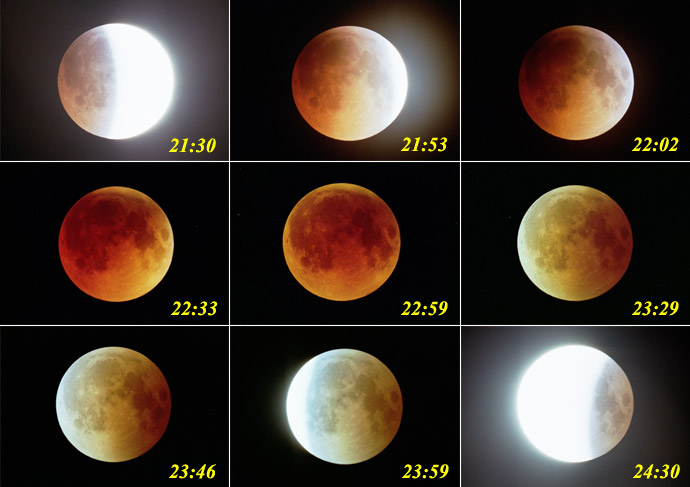
 |
| Date & Time: | Jul 16 2000 (Times in image are JST, 4 to 10 sec. exposed each) |
| Optical: | VIXEN 20cm(7.9") VISAC (f=1800mm, F9.0) |
| Auto-guided with TAKAHASHI EM-200 Equatorial | |
| Camera: | VIXEN VX-1 |
| Film: | Fujicolor Super G Ace 800 |
| Location: | Subashiri halfway up Mt. Fuji, Shizuoka pref. |
Progress of Lunar Eclipse |
Lunar Eclipse, shadow of Earth |
| Copyright(c) 2000 by Naoyuki Kurita, All rights reserved. | ||
| To top page | To Eclipse index |